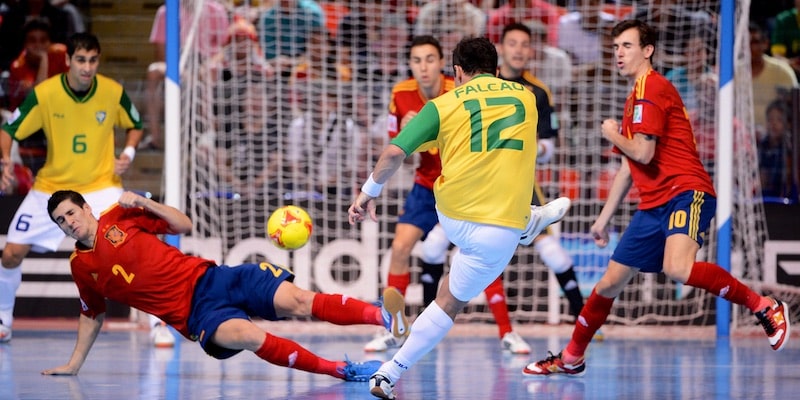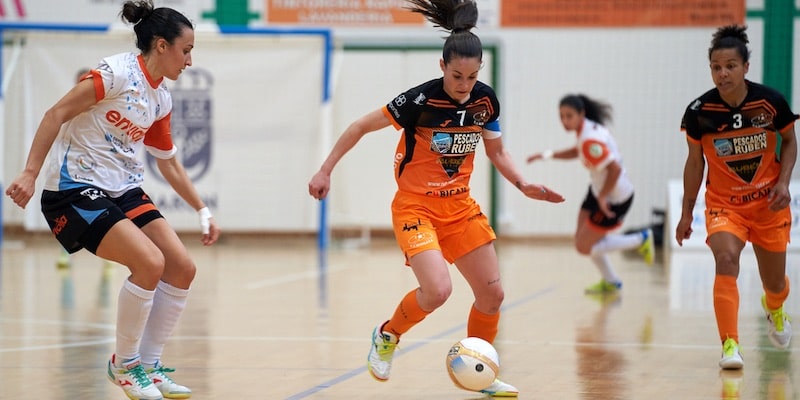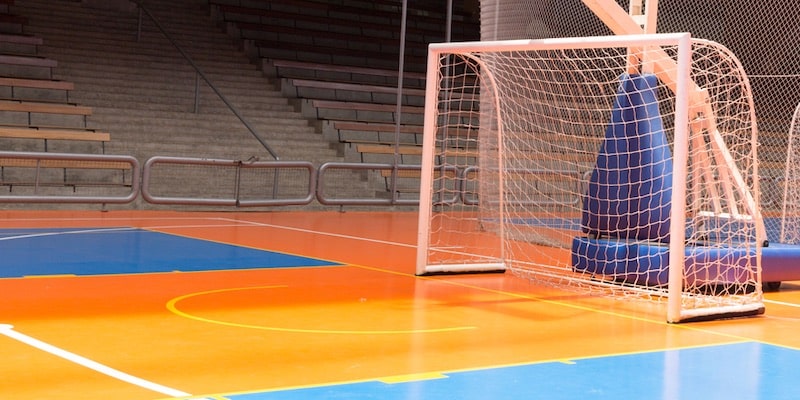We explain what futsal or indoor soccer is, its rules and differences with futsal. In addition, we tell you its origin and its history.

What is futsal?
Indoor soccer, which can sometimes also be called futsal, foosball, micro soccer, futsal, It is a group Olympic sport, of collaboration-opposition, very similar to football or soccer except that it is played indoors, with a smaller and heavier ball, and with fewer simultaneous players.
As with football, futsal is a sport of international scope, which is practiced by teams of both sexes, and whose maximum competition is the World Futsal Championship, organized by FIFA. There is, however, a second international organization that represents this sport, known as the AMF (World Futsal Association) which organizes its own sporting events and who understands the sport in a somewhat different way, so much so that he has even proposed his own rules.
Hence, indoor soccer (AMF) is often differentiated from futsal (FIFA), as if they were two different sports, when in reality they are the same sport with slightly different executions. For example, the half-time interval in an AMF match is 10 minutes, while FIFA grants a 15-minute break.
In both cases, however, the fundamentals of the sport are the same: The team that scores the most goals by getting the ball into the opponent's goal will win using only the feet and head to touch the ball. Each team has attackers and defenders, and among the latter a goalkeeper who guards the goal, and who is allowed to use his hands.
See also: History of football
Origin and history of futsal

futsal It had its origin in the framework of the 1930 Soccer World Cup, held in Uruguay when the young people of Montevideo, eager to play soccer, lacked sufficient fields. So, physical education teacher Juan Carlos Ceriani from the YMCA (Young Men's Christian Association) decided to adapt the rules of football to an indoor and much more restricted environment using rules and models from other sports, such as handball. Indoor soccer was born in this way.
futsal It was so successful in Uruguay that it soon spread to the rest of South America and from there to the entire world and quickly gained followers. In 1965, the first international indoor soccer association was created, the South American Indoor Soccer Confederation, which held the first South American national team championship that same year. Just six years later, The International Indoor Football Federation (FIFUSA) was created in Sao Paulo which organized the first of six futsal world championships in 1982.
In 1985, however, the organization faced a serious economic crisis and many of its confederations abandoned it. So, FIFUSA directors asked FIFA to also incorporate futsal into its administration. This initiative failed to bring together all the professional leagues of this sport again, and those leagues that had split early formed the AMF in 2002. From then on, both organizations faced each other for control of the professional exercise of this sport.
Futsal rules

The rules of futsal, common to both the FIFA version and the AMF version, can be summarized as follows:
- In each game Two teams of five simultaneous players each will face each other over a forty-minute match. The latter is divided into two 20-minute rounds, separated by a break of 10 (FIFA) or 15 (AMF) minutes.
- If there is no winner at the end of the time, an extension is granted one minute on each side of the court.
- Players, except the goalkeeper, may touch the ball only with their feet and head. Goalkeepers, however, cannot do so outside their corresponding areas, nor can they hold the ball for more than 4 seconds.
- The goals are smaller than those of football and the ball is also smaller (62 to 64 cm) and heavier (400 to 440 gr).
- The playing area is delimited by the lines of the court: If the ball leaves the playing area, it will be a throw-in for the opposing team. Whenever there is a serve, or a foul is committed, the game clock must stop.
- Each team will be able to make any player changes they wish starting from your reservation of up to 12 players.
- From the fifth foul made by a team, a free throw will be awarded without barrier (“double penalty”).
- Each goal is worth one point.
Differences between futsal and futsal
The differences in the execution of the sport between futsal (AMF) and futsal (FIFA) can be summarized as:
| Futsal (FIFA) | Futsal (AMF) |
|---|---|
| The throw-in and the corner kick are done with the feet. | The throw-in and the corner kick are done with the hands. |
| 15 minute breaks between one time and the other. | 10 minute breaks between one time and the other. |
| The goalkeeper can act like a normal player outside his goal area. | The goalkeeper cannot cross the middle of the field. |
| The goalkeeper's serve works the same as in soccer. | The goalkeeper's serve cannot exceed half of the court. |
indoor soccer field

The indoor soccer field is a hard, covered environment, on which you run with rubber-soled shoes (without studs) since it lacks artificial grass. Its proportions range from 25 meters long by 16 meters wide, up to 40 meters long and 20 meters wide. At each end there is a goal smaller than a soccer goal.
Lastly, the court is divided into two perfectly symmetrical sides, each with an area drawn around the arc (within which the goalkeeper can touch the ball with his hands or hold it).
Positions of futsal players
Futsal players can act as attackers or defenders, according to need, but in general they are placed according to four positions:
- Pivot or forward. He is the player closest to the opposing goal, usually in continuous movement to look for an opening in the enemy defense.
- Sides or wings. They are the midfield players who play offensive and defensive roles, one on the right side and another on the left side of the field.
- Closing or last. He is the defensive player who triangulates the attack from the side of the field and normally remains in the rearguard.
- Goalkeeper or goalkeeper. He is the only player who can, within his area, touch or hold the ball with his hands. Your task is to intercept rival shots so that they do not enter the net.
Continue with: Types of sports
References
- “Futsal” on Wikipedia.
- “History of futsal” at Colegio Jean Piaget (Chile).
- “Futsal” in the Sports Service of the University of La Laguna (Spain).
- “Futsal rules of the game” (video) in the Football Federation of the Region of Murcia (Spain).





